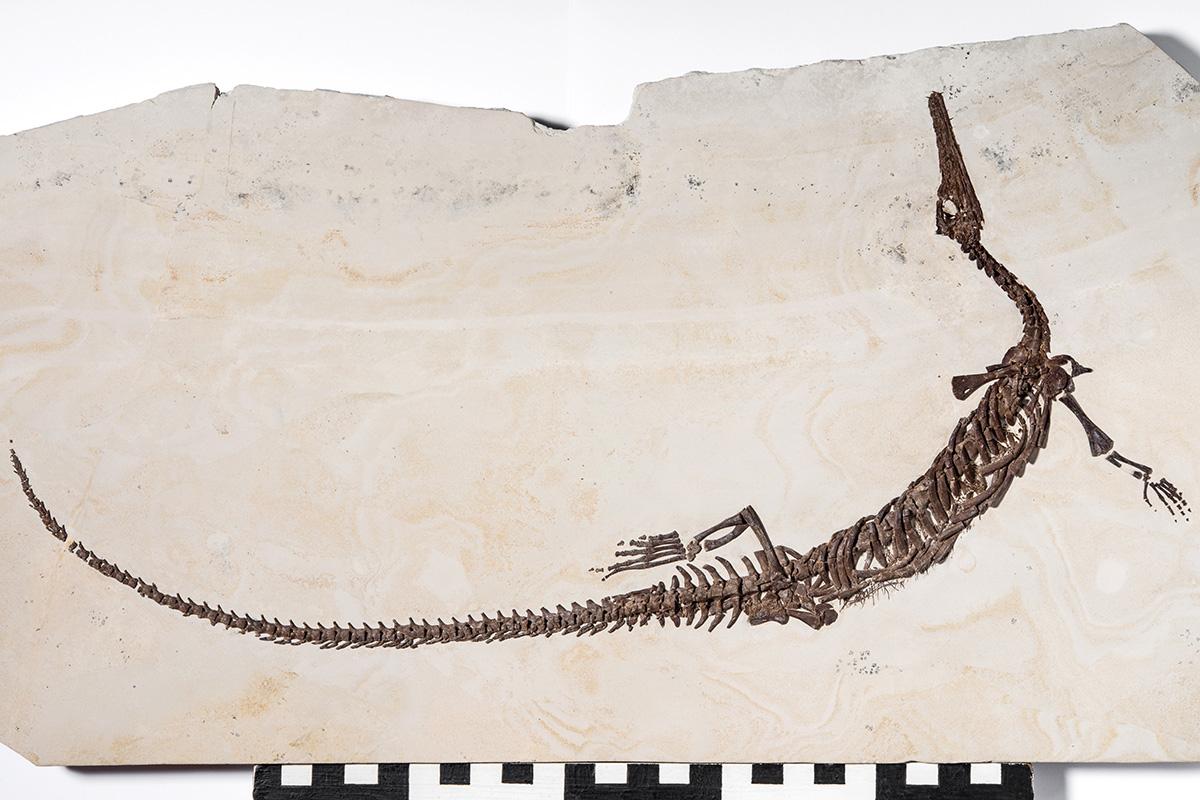An international team of scientists led by Dr. Mark MacDougall from the Museum für Naturkunde Berlin thoroughly investigated the tail anatomy of mesosaurs, the oldest known aquatic reptiles, which provide new insights into the early evolution of caudal autotomy, the ability to drop their tail, in vertebrates. The results are published this week in Scientific Reports.
Mesosaurs were a group of fossil reptiles that were living 278 million years ago in eastern South America and southwestern Africa, at the time when these continents were still connected as part of the supercontinent of Pangaea. They are renowned for being the first reptiles to have returned to a fully aquatic lifestyle after the colonization of land, as well as for representing a key line of evidence for the theory of plate tectonics.
Mesosaurs are among the most basal reptiles, they give us a glimpse of what features may have been present in the common ancestor to all reptiles.
A controversial feature of mesosaurs has, however, not received much attention: the vertebrae of their tail bear structures resembling fracture planes. Fracture planes are points of weakness present in the tail of some vertebrates. They are used as breaking points to drop the tail, which can serve as a distraction to escape predators, this is a behaviour known as caudal autotomy. Many living lizards possess fracture planes, and the presence of these planes is usually considered an indicator of their ability to perform caudal autotomy. However, the potential presence of fracture planes in mesosaurs has previously not been thoroughly investigated.
The team including lead-author Dr. Mark MacDougall, doctoral researcher Antoine Verrière and Professor Dr. Jörg Fröbisch, all from the Museum für Naturkunde in Berlin, Germany, as well as international colleagues from Canada, Germany, and the United Kingdom, conducted the first thorough investigation of apparent fracture planes in the three known species of mesosaurs. Using dozens of mesosaur fossils, X-ray computed tomography, and bone thin sections, the scientists were able to confirm the presence of fracture planes in the tails of mesosaurs, though they are not quite as extensive as those found in other animals.
“However, the ability to drop their tail would not have benefited mesosaurs, since there were no known predators in their environment, and because they primarily used their tails for swimming”, says co-author Antoine Verrière. Therefore, despite the presence of these structures in mesosaur tail vertebrae, they concluded that it was unlikely that these structures were actually used for caudal autotomy. Instead, fracture planes in mesosaurs likely represent an evolutionary relic, a structure retained from their terrestrial ancestor but not actually used.
“In fact, the internal anatomy of the tail vertebrae shows that the potential fracture planes are reduced by excessive bone growth, which further suggests that these features are non-functional but rather an evolutionary relic”, says Prof. Fröbisch.
Dr. Mark MacDougall who led the study states: “The presence of fracture planes in mesosaurs adds to the growing number of early reptiles that had these structures, which suggests that they were more widespread than previously considered.”
Publication:
MacDougall, M.J., Verrière, A., Wintrich, T., LeBlanc, A.R.H., Fernandez, V. and Fröbisch, J. (2020) Conflicting evidence for the use of caudal autotomy in mesosaurs. Scientific Reports. DOI: 10.1038/s41598-020-63625-0
Pictures for free use with the content of the press release:
http://download.naturkundemuseum-berlin.de/presse/MesosaurierSchwanz
